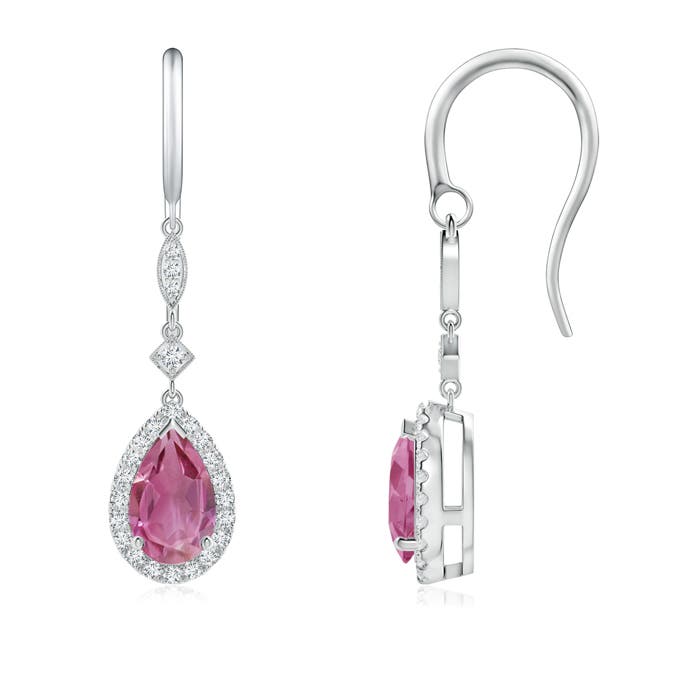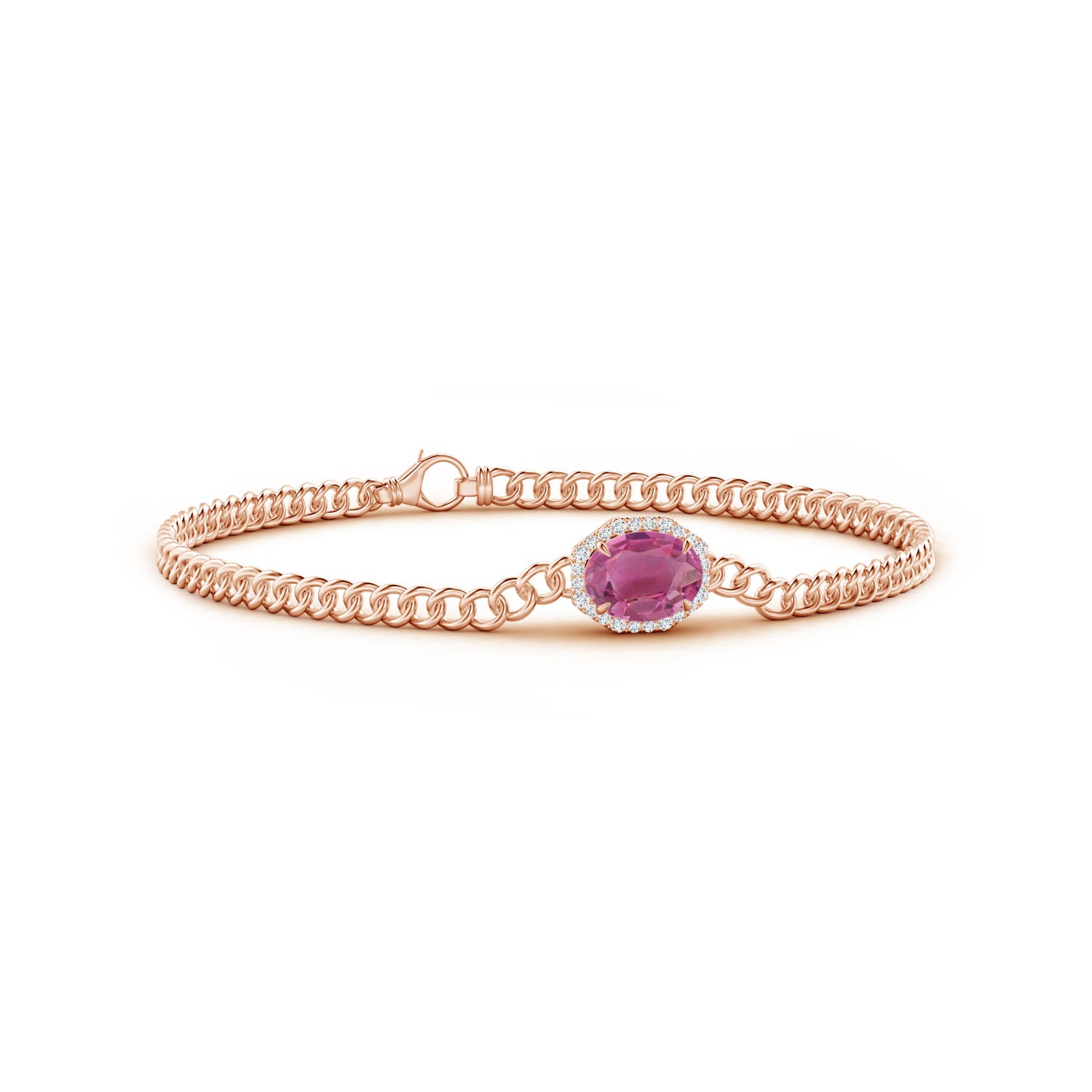In case you’re new to the world of tourmalines, let’s first give you the definition of this stunning gemstone. Tourmaline is a crystalline silicate mineral group, which has boron that is combined with other elements such as magnesium, iron, aluminum, lithium, potassium, and sodium. What might come as a surprise to you is that the word tourmaline was derived from the Sinhalese word ‘toramali’, which is about the carnelian gemstone. For years, tourmaline has been used to create beautiful jewelry pieces in the form of earrings, rings, pendants, and bracelets. If you are in search of the perfect tourmaline and wish to know more about the difference then keep on reading as we delve deeper into this timeless gem.
History
Found near Italy’s west coast in the late 1600s by Dutch traders, tourmalines, including California and Maine, became a gemstone of great fascination and awe. All colored gems were referred to as tourmalines in the past since gemologists and traders couldn’t tell one stone from another. This led to the incorrect identification of pink and red tourmaline, even though the pink tourmaline is pinker in hue than a ruby.
The process known as hydrothermal activity takes place to form tourmalines in pockets, cavities, fractures, fissures, or any other open location in igneous or metamorphic rocks. Due to this hydrothermal activity, emerald, fluorite, amethyst, and rock crystals are also formed.
Tourmaline Colors
The most popular colors of semi-precious tourmaline are red, pink, blue, green, and multi-colored. Some of the common colors include white, black, yellow, orange, brown, grey, and purple. The multi-colored watermelon tourmaline with its red center surrounded by a green outer layer and the exquisite neon-blue Paraiba tourmaline are some of the most popular tourmaline stones
Different Types of Tourmaline
One of the most mysterious and sensual tourmaline gemstones is called Schorl (Black Tourmaline). Unlike other tourmalines, it never appears transparent or translucent and is only visible in the colors black, dark bluish-black, and dark greenish-black.
- Elbaite: This is yet another type of tourmaline that possesses a gradient of stunning colors. Most green and blue varieties of elbaite tourmaline show intriguing optical characteristics like pleochroism or the ability to change shade depending on the angle at which it is seen. Elbaite tourmaline comes in a colorless variant as well, called charoite. Due to its extreme rarity and high value, collectors highly prize this gemstone.
- Rubellite: A naturally occurring gemstone called rubellite belongs to the vibrant elbaite family. Due to the presence of iron and manganese, its hue ranges from red to violet, and even to deep dramatic pink. Its name comes from the Latin word “rubellus,” which in English means reddish. It is a costly gem because of its rarity and allure.
- Indicolite: Elbaite tourmalines come in the highly prized variant known as indicolite. Due to the iron content, its colors range from pale to deep, vivid blues. Unfortunately, indicolite is highly pleochroic and appears darker when viewed from specific angles, making the cutting process quite difficult for jewelers.
- Verdelite: Due to the inclusion of iron and titanium, verdelite, also known as green elbaite tourmaline, appears in various green colors. The appropriate lighting is required to observe the body color of some verdelites since they are saturated. This tourmaline falls under the list of green gems.
- Watermelon Tourmaline: A variant of Elbaite tourmaline called watermelon tourmaline has a pink core with a green ring around the exterior, resembling the pattern typically found in the watermelon fruit.
- Siberite: The Elbaite tourmaline variety Siberite comes in hues ranging from lavender to violet to purple.
- Liddicoatite: An unusual kind of tourmaline called liddicoatite is similar to Elbaite in terms of chemical composition. This gemstone has lovely triangular color cross-sections and can be seen in several shades, including pink, red, green-brown, blue, or a combination of these.
- Dravite: The Brown Tourmaline called Dravite grows in a simple formation. There are however some premium pieces that are fashioned along with stunning diamonds and glossy surfaces.
- Bi-Color: An uncommon variety of tourmaline known as a bi-color tourmaline is one in which two or more crystals of different colors come together to form one exquisite gem. These stones typically have a pattern of pink and green.
- Paraiba: A special type of tourmaline is called paraiba tourmaline. Because copper and manganese are present, they can be viewed in various colors, including neon blue, green, and blue-green. Although it was formerly mined in Brazil, we now have additional reserves from Nigeria and Mozambique.
If you’re seeking your favorite tourmaline, visit Angara’s gorgeous online collection of unique tourmalines. These gemstones are all natural and untreated. Additionally, your stone can be altered into a piece of jewelry to suit your preferences, as well as your budget.
Benefits
Wearing a gemstone made of tourmaline has various advantages. There are numerous benefits of wearing a tourmaline stone. Let’s discuss them in detail
- Improves Blood Circulation: These stones significantly impact the body’s ability to circulate blood. A healthy metabolism benefits from good blood flow, and maintaining an active metabolism is essential for leading a healthy lifestyle.
- Controls Mood Swings: Black tourmaline has outstanding radiation, which benefits a highly healthy body, mind, and soul. Due to this, the gemstone helps in calming the mind and establishes mental peace.
- Detoxifies: Considering today’s lifestyle and constant need for hustle, the body reaches a saturation point and leads to the accumulation of toxins and pollutants, which can be detrimental. Tourmaline, in this case, can prove to be a great gemstone to clear the body of these unwanted contaminants and balance the body, mind, and heart chakra.
- Supports Weight Loss: Getting in shape and losing weight can be a herculean task for some, but the good news is that a tourmaline ring can be a personal cheerleader and guiding stone during your fitness journey. The gemstone is believed to speed up metabolism and also suppress unnecessary cravings.
- Supports Your Immune System: Catch a cold at the drop of a hat? The first one to get a fever as soon as the weather changes? You need stronger immunity, and a tourmaline gemstone is a perfect solution to enhance that. From strengthening the immune system to providing a protective shield that wards off any infection, tourmaline is an excellent gemstone for those who have a compromised immune system or fall ill easily.
Taking Care of Tourmaline Gemstone Jewelry
In terms of hardness, tourmaline ranks 7 to 7.5 on the Mohs scale. Although it is a superb gemstone and is resistant to chips, cracks, and scratches, it needs some care to be shielded from errant blows and temperature fluctuations. Tourmaline is heat sensitive. Rapid temperature swings can even induce sudden fractures within the gem’s composition. In addition, high temperatures can change or alter the color of the gem as well.
Whether it is how to clean a tourmaline bracelet and ring, or how to take care of tourmaline bracelets in general, the rule of thumb is to always take off tourmaline-encrusted jewelry before any physical activity, such as working out, gardening, cleaning, etc. Also, take off your tourmaline jewelry before stepping into the shower, and also before going for a swim, as the harsh chemicals in hygiene products can tarnish the shine of your gemstone.
- Use warm water and mild dish soap to clean tourmalines at home.
- Your jewels should be carefully placed in the prepared liquid, where they should soak for 20 to 30 minutes.
- The dirt will be loosened as a result.
- After running the tourmaline bracelet or ring under warm water, scrub the filth away with a gentle toothbrush.
- Next, use a soft microfiber cloth to dry the tourmaline gemstone or let it air-dry.
Conclusion
Besides its staggeringly beautiful hues, tourmalines are often associated with protection, grounding, happiness, health, prosperity, and abundance. Whether you wish to own a tourmaline gemstone as an engagement ring, or whether you’d like to have it as a pendant that will protect you, you can explore Angara’s wide range of tourmaline rings, earrings, pendants, and bracelets, all of which look stunning and regal.
Also Read
- Different Types And Colors Of Onyx
- Different Types of Akoya Pearl
- Different Types of Amethyst
- Different Types of Aquamarine
- Different Types of Black Onyx
- Different Types of Black Opal
- Different Types of Blue Sapphire
- Different Types of Blue Zircon
- Different Types of Citrine
- Different Types of Coffee Diamond
- Different Types of Diamond
- Different Types of Earring Back
- Different Types of Emerald
- Different Types of Black Diamond
- Different Types of Freshwater Pearl
- Different Types of Golden South Sea Pearl
- Different Types of Green Sapphire
- Different Types of Kyanite
- Different Types of Moissanite
- Different Types of Moonstone
- Different Types of Orange Sapphire
- Different Types of Peridot
- Different Types of Pink Tourmaline
- Different Types of Rainbow Moonstone
- Different Types of Rose Quartz
- Different Types of Rubelite
- Different Types of Ruby
- Different Types of Sapphire & Their Colors
- Different Types of Tahitian Pearl
- Different Types of Tanzanite
- Different Types of Teal Montana Sapphire
- Different Types of Tsavorite
- Different Types of Turquoise
- Different Types of Yellow Sapphire
- Different Types & Colors of of Topaz
- Different Types of Garnet
- Different Types of Opal
- Different Types of Pearls
- Which Emerald is Best in Quality?
FAQ
Angara uses high-quality pink tourmalines to fashion chic and sophisticated earrings, engagement rings, pendants, and petite bracelets that look sublime. Authentically sourced and created with meticulous care and detailing, the tourmaline jewelry available on the Angara website is surreal and complements a range of ensembles.
Watermelon tourmaline is a unique type of tourmaline with green and pink hues, as is often used to create tourmaline rings. This type of tourmaline looks ultra-feminine and hence is a popular pick amongst modern-day women, as well as brides who wish to get something dainty for their wedding day or engagement.
































